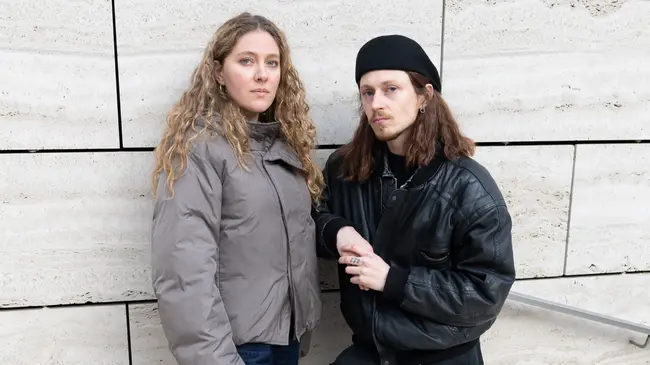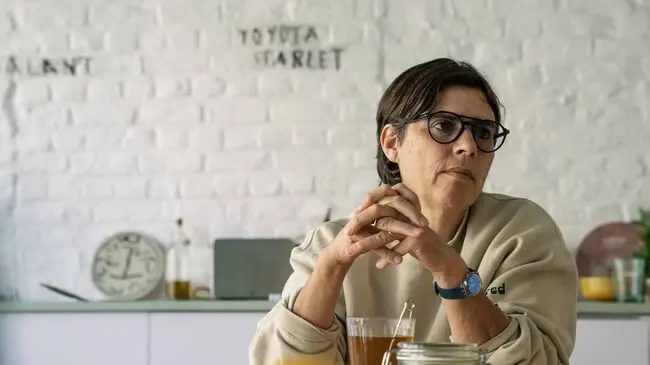You can bring a new life to the fabric

From the many Belgian art schools to the undeniably fashionable population, there is no denying that Belgium, and Brussels in particular, is a major player in the fashion industry. But what role does it play exactly? The Fashion & Lace Museum invited art historian, author, and curator Lydia Kamitsis to dissect this question, honing in on Brussels, rather than the well known Flemish fashion influences.
We visited Brussels Touch with artist, designer, and textile maker Arthur Roels, to view the 33 designers on display, all of whom have some connection to the city of Brussels. As we moved through the dim rooms, passing the separatory thick, sanguine PVC strip curtains, we were introduced to new designers and got to know familiar ones just a bit better. Then, we sat down to discuss the exhibition, manipulations in fabric, and Arthur’s personal passion for textile.
What did you take away from the show?
Many of these designers gathered their cultures to make their own signatures. If you want to be a designer or an artist, it is important that people don't have to know your name to look at your work and recognise it. I saw that in many of the designers in the show, especially ones that have continued in the same branch, doing the things that they like to do since they started out in fashion.


So, do you think that recognisability is important for a designer?
Yes. Take Maison Margiela, for example, he started out in the 80s, at the Antwerp academy. Even back then when he was studying, he was doing exactly the same things that he is doing now. It was really nice for me to recognise these things when I saw his work because it tells me that I also need to find something I can use every time.
Those manipulations are interesting to me
Margiela’s signature is his manipulations of the fabrics. I also used this technique a couple of times when I was making fashion. I think this style is really popular right now. For example, kids of my generation are wearing very big grandpa pants, but they stitch on an extra button. Those manipulations are interesting to me.


Were there any specific pieces you liked in the exhibition?
The first works we saw when we entered were these three silhouettes of black and white dresses. They were very cool because they were classic costumes, but a couple of small details, like the metal safety pin, added this unique manipulation. This changes your perception of the clothing immensely. I love seeing that a designer worked to make a new innovation. The draping of the fabric was very chic as well.
It is just very straight up
There was also this one tee shirt by Girls from Omsk that I really liked. It has a screen-printed image of a guy smoking a cigarette. It is just very straight up.


Have you always been interested in fashion?
When I was a kid I would put on my parent's heels, and just walk around at home, but I could never go outside in that stuff. My parents would always ask why I didn't pursue a fashion-related career. I was in a very commercial education at first, but then I really dropped everything and dove into fashion.
When I first entered this world, I was making clothes. I put all my love, all my creation, and all my vision, and also the things around me into the pieces. I made a collection for school about lace. I was interested in merging older styles with new ones, looking at how young people have been wearing clothing typically worn by elderly people.


Does an older style of clothing interest you?
Yes, Lace is really interesting for example. It reminds me a bit of my grandparents actually. Everybody in Belgium knows lace, we all see it, but never really think about what it is. It is made up of all these little weird forms that just move into each other; it reminds me of baroque architecture. These intricacies also seem to have shown up all over the world, you see it in tribal tattoos as well. I think it has remained popular because it shows that somebody put so much work into it. That is the thing about fashion. Somebody has put time into what they are going to make and how they are going to make it. Even in the typical pieces, you see on the street, all the small details are super well thought out. Especially now, going into 2022, everyone is focused on those small details. Those small details show how fashion is made, and what fashion is.
These intricacies also seem to have shown up all over the world

photos of Arthur's collection

What are you working on now?
A big part of my process has always included manipulations in the fabric, and also in the cutting. I began focusing on the fabrics, and making other fabrics, using them to create very weird pants or shirts or skirts. Because of this, I decided to move on to studying textile. I wanted to learn how to make new fabrics. Currently, I am learning to make my own pigments to put on fabrics, using some plants I found. If I can make the fabric, I can make clothing with it. The way I see it, you can always make clothes, but as for the fabric, what you see is what you get. If you make the textile on your own, it offers a much more tactile relationship with the work.

How has the spirit of Brussels fashion influenced your personal style?
My style, which I think is within this spirit of Brussels fashion, is super diverse. On Monday I might wear heels, and then on Friday maybe I'll wear my trashed skate shoes from vans and fully distressed clothes. I am also always wearing at least one feminine piece.
A lot of Belgian fashion is thrifting, which I do as well. I really like upcycling clothes. You can buy big bags of clothes for 25 euros, and sometimes you find crazy cool pieces. There are so many forgotten clothes, and you can bring a new life to the fabric.
Different Class works with the interest of their community at heart.
Our work’s purpose is to foster a solid network for independent artists, those who love them, and those who want to support them. Become a member to contribute to the local Belgian art scene.





